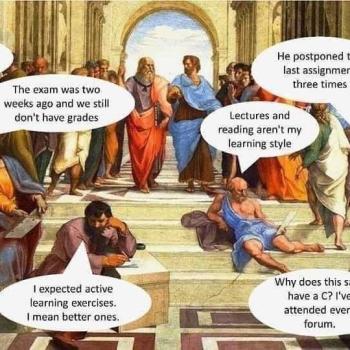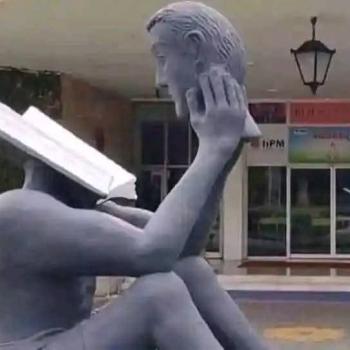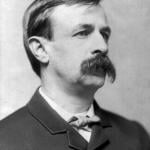[Note: To see the series so far, read Part One, Part Two, Part Three, and Part Four.]
In some ways, Chapter Five, which is brief (pp. 121-37) is the best chapter in the book thus far. Here Rob reviews a variety of metaphors and ideas used to explain both the work of Christ on the cross and its benefits. He stresses that Christ’s death meant the end of the sacrificial system in toto. Jesus paid it all.
I particularly like p. 134, which, among other things, stresses “When people say that Jesus came to die on the cross so that we can have a relationship with God, yes that is true. But that explanation puts us at the center. For the first Christians, the story was, first and foremost, bigger, grander. More massive. When Jesus is presented only as the answer that saves individuals from their sin and death, we run the risk of shrinking the Gospel down to something just for humans, when God has inaugurated a movement in Jesus’ resurrection to renew, restore, and reconcile everything ‘on earth or in heaven’ (Col. 1). Just as God originally intended it. The powers of death and destruction have been defeated on the most epic scale imaginable. Individuals are then invited to see their story in the context of a far larger story, one that includes all of creation.”
This is a good correction on an over-emphasis on the human benefits of the work of Christ, and particularly his death and resurrection. Rob is good with metaphors and spinning them out in various creative ways, but in this chapter one gets the impression that he is trying to connect the crop cycle, and the seasonal cycle that involves dying and rising of one sort, with the death and the resurrection of Jesus, as if these two things are somehow cosmically connected, or as if nature is a giant metaphor of the death and resurrection of Jesus. But in fact, this connection is not merely strained, it is just wrong. Jesus was not planted in the ground with the sure and certain hope he would inevitably pop up like toast in a toaster at some future date when spring rolled around. Jesus’ resurrection has nothing to do with the crop or seasonal cycle. Indeed, it is in defiance of all such natural processes, over-ruling them rather than depicting them. The resurrection of Jesus was a unique historical event, with no precedents, and as of yet no sequels, as it involved someone coming back from the dead with a resurrection body — something no one before or since has experienced. The resurrection of Jesus is a miracle in the midst of the mundane, in the midst of history, and frankly has nothing to do with the natural cycles of nature.
Does the death and resurrection of Jesus provide some sort of metaphorical cache for what happens when a person is ‘born again’ through the Spirit of God? Yes, that is so — the old person has died, and we are now new creatures in Christ. Not physically yet, but inwardly and spiritually. But again this transformation has nothing to do with the rebirth of nature due to the sun’s warmth in spring and the change of the seasons. While the earth was subjected to futility due to the Fall of humans, the earth itself will not be raised from the dead in the sense that we will be. It will be either redone or restored, and in any case it is not about salvation from sin, for the creation itself isn’t guilty of sin nor is it created or recreated in God’s image then or now. It is right to see some connection between our destiny and that of the creation, but it is wrong to think that what death and resurrection means for us is the same thing it means for the rest of creation. When it comes to the redemption of humans through the death and resurrection of Jesus, we cannot say ‘that’s the way the universe works’. But we can say, ‘that’s the way the God of history works’, and those are distinguishable subjects.
Two last points. It is important to realize that the Gospel writers stress the objective nature of Jesus’ resurrection. The tomb was empty before any mortal encountered Jesus. And as Paul stresses in 1 Cor. 15, ‘he appeared to….’ a gigantic list of people, some friends, some foes. That is, Jesus deliberately chose to appear to certain persons, even to people like James his brother and Saul who did not yet believe in him. So it is not about ‘we saw or encountered Jesus’ in the first instance. It is about his objectively choosing to appear to various people in various places in the flesh. And lastly, it is important not to dimension the substitutionary and truly sacrificial and atoning nature of the cross. Of course there are other good ways to talk about his death, and we can always say more than that, but we should never say less than that, as atonement for sin and appeasing the righteous wrath of a good and just God are indeed at the heart of why Jesus had to die. That’s the Gospel story, however blunt it may seem to us, and I’m sticking to it.
Relevant Links:
Subscribe to Ben Witherington’s RSS or email subscriptions
Part 4 of this series, “Does God Always Get What He Wants?“
Scot McKnight, “Are We At a Tipping Point?“
Timothy Dalrymple, “What Launched the Bell Battle? – Part 1: Rob Bell is No C. S. Lewis“












